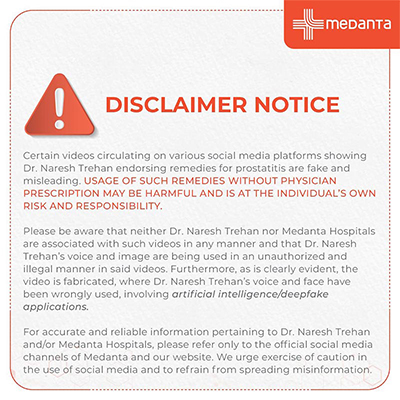A Deep Dive into Robotic Kidney Surgery: What You Need to Know

TABLE OF CONTENTS
When it comes to kidney cancer, often doctors suggest surgery as the first line of treatment for removing all or part of the kidney. In the case of small and localized kidney cancer, surgery even has the potential to cure it.
The advancements in the medical field have made it possible for surgeons to use minimally invasive surgical techniques for kidney cancer. One such advanced technique involves using robots for kidney cancer and thus is called robotic kidney surgery.
Let’s take a closer look at robotic surgery for kidney cancer, including its types, benefits, procedure, and recovery.
What is Robotic Kidney Surgery?
Robotic kidney surgery is a minimally invasive procedure that is used for kidney cancer or replacement. This surgical procedure involves using robotic systems to assist surgeons in performing complex kidney surgeries with enhanced precision, flexibility, and control. Robots help surgeons operate the necessary surgical tools. Also, they can hold and operate various instruments with their four arms. A surgeon guides the movements of the robot’s arms via a control panel near the operating table while viewing the surgical area in 3D, magnified detail.
Moreover, unlike traditional open surgeries, which require large incisions, robotic kidney transplant surgery involves using several smaller incisions in the patient’s abdomen, reducing the risk of complications and promoting faster recovery.
Types of Robotic Kidney Surgery
Robotic renal transplant surgery can be broadly categorised into two main types: robotic-assisted partial nephrectomy and robotic-assisted total or radical nephrectomy:
Robotic-Assisted Partial Nephrectomy
This surgical procedure can help treat the majority of kidney tumours, complex cysts, or masses. Surgeons remove only the diseased or damaged portion of your kidney while preserving the healthy, functioning part.
Not only does this surgical procedure spare the majority of healthy kidney tissue, but it also repairs it surgically to let blood and urine flow normally. Thus, it’s also called kidney-sparing or nephron-sparing surgery.
Robotic-Assisted Total Nephrectomy
Robotic-assisted total nephrectomy involves the complete removal of the kidney. This robotic nephrectomy surgery is often recommended when the kidney tumour is too large or problematic or in cases when the kidney is severely damaged or no longer functioning properly.
Advantages of Robotic Kidney Surgery
As with most robotic-assisted surgical procedures, robotic kidney surgery offers several significant benefits over traditional and these are:
Benefits of Robotic Kidney Surgery | |
Enhanced Precision | With the help of robotic systems, surgeons can achieve superior control over surgical instruments, allowing for precise movements that are usually difficult to achieve with human hands. |
Reduced Human Error | This advanced technology reduces the chances of human error, especially in complex procedures for kidney cancer or replacement. |
Smaller Incisions | The robotic kidney transplant surgery involves smaller incisions compared to traditional open surgery, leading to less scarring and a more aesthetically pleasing outcome. |
Less Pain | Patients typically experience less pain post-robotic surgery due to the smaller incisions and reduced tissue trauma. |
Shorter Hospital Stay | The minimally invasive nature of robotic surgery enables patients to recover faster, which implies they can leave the hospital sooner than with traditional open surgeries. |
Lower Risk of Complications | Robotic kidney surgical procedure enhances precision and accuracy, reducing the risk of complications such as infection and excessive bleeding. |
Better Functional Results | Undergoing surgical procedures like partial robotic nephrectomy, patients can preserve their healthy kidney tissue, leading to better long-term functional outcomes. |
Quicker Return to Normal Life | With robotic kidney surgery enabling faster recovery, patients can usually resume their normal activities relatively quicker, enhancing their overall quality of life. |
What is the Procedure of Robotic Kidney Surgery?
Robotic kidney surgery starts with administering general anaesthesia into your body. It means you will be asleep during the entire surgical procedure.
Your surgeon will make small incisions in your abdomen and operate the robot’s arm via the control panel. One arm of the robot will be holding a high-magnification 3D camera and the other three will be holding different surgical tools. The arms of the robot will be used to insert the camera to gain a magnified, 3D view of the surgical area and surgical tools into small incisions made in your abdomen.
During the procedure, your surgeon will carefully dissect and remove the cancerous or affected portion of your kidney (in partial nephrectomy) or the entire diseased or malfunctioning kidney (in total nephrectomy). They meticulously manage blood vessels and surrounding tissues to minimize blood loss and protect healthy areas. Once the surgery is completed, your surgeon will close the incisions with sutures or surgical glue, and you will be moved to the recovery area.
What’s the Recovery Like for Robotic Kidney Surgery?
Generally, recovery from a robotic renal transplant or cancer surgery is faster and less painful compared to traditional open surgery. Most patients can expect a hospital stay of 1 to 3 days and 10 to 14 days to recover fully. However, depending on the complexity of the surgery and your overall health, you might take several weeks to resume your normal activities.
It’s normal for you to experience some discomfort or pain post-surgery. Also, the following are potential surgery-related side effects:
Infections
Bleeding
Abdominal bloating
Reduced kidney function
A hernia near the incision
Injury to surrounding blood vessels or organs
You can ensure faster recovery and better health by taking prescribed medications, engaging in moderate exercises and physical therapy, and scheduling follow-up appointments regularly.
To sum it all up!
Robotic kidney surgery is an advanced surgical technique that has made curing kidney cancer or replacing the organ less painful and more precise. With benefits like smaller incisions, faster recovery, and improved outcomes, this surgical technique is gaining more traction.
Are there cancerous cells in your kidney? Do you want to get your malfunctioning kidney transplanted? Whether it’s kidney cancer or transplant, our Medanta kidney transplant specialists can perform kidney surgery seamlessly using cutting-edge technology of the latest special robots.





